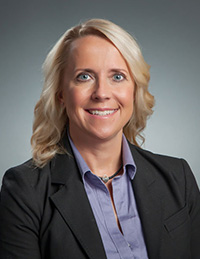
My mom suffers from vascular dementia. It's a progressive, slow, debilitating disease. As a non-medical person new to the maze of healthcare and elderly care, there was a lot to learn. My mom's in a nursing home 10 minutes from my house and I am now comfortable with the language of both nursing homes and the medical situation my family and I deal with daily. My mom's situation has opened my eyes and has gotten me to look at things differently – particularly the need to advocate for her care and be her voice in every way, every day. We keep saying, "there's got to be a business here because who would know what to do?" Fortunately those of us working in the claims industry are doing just that for our clients. We should be the source people turn to for guidance when navigating the unfamiliar territory of being injured.
The same complexities I face in my personal situation apply to the way we deal with our employer partners and their losses every day. This idea has some really direct application to how we should think about our work now and in the future. At Sedgwick, our job is to be there when our customers have something unfortunate happen. We have an opportunity to think about the role we play as an advocate for all parties, with the system as the backdrop. Our CEO, Dave North, blogged about the changing demographics of the U.S. workforce and the complexities infused in the healthcare system by recent national legislation. We see the need to make things clear and easy to understand. How we communicate is – and will be – critical to the future of casualty claims. It's 2014 and time for us to rethink the ways we communicate – and the methods we use – as they relate to the culture of today.
Give some thought to the benefits of shifting focus from your current approach in a claim scenario to the approach of a true advocate. The bottom line is delivering great customer service. Recently, Sedgwick had a speaker from the Disney Institute speak at a leadership conference about how they infuse the Disney way into the practices of everyone at the company. The Disney Institute's first blog of 2014 looks at how they will continually improve customer service in 2014. They are not content to rest on their laurels.
So how do we apply this type of focus in the claims industry? If we see our primary role as that of helper – helping the employee navigate a complex system and helping the employer successfully get the injured employee back to work – we also can help everyone avoid litigation and create a new type of customer experience not seen every day, or at least one that has not been the historic norm in the world of claims.
About 10 years ago, the major brokers were marketing a system designed to "improve your denial rates" – touting savings from denying more claims. The truth is that the financial gain for our employers is not in denying more claims, but in making quick, accurate decisions and, when impactful, taking extra time in some claims to explain exactly what the injured worker should expect, how to navigate the system, and to set an expectation for an end to the story. The key to this is also what the employer brings through ongoing discussions with the injured worker.
Help us create a new world where we begin with the end in mind and do it with today's technology and culture in mind. Advocate for our customers and their injured workers – that's how we do it here.
Kathryn Tazic, SVP, Client Services